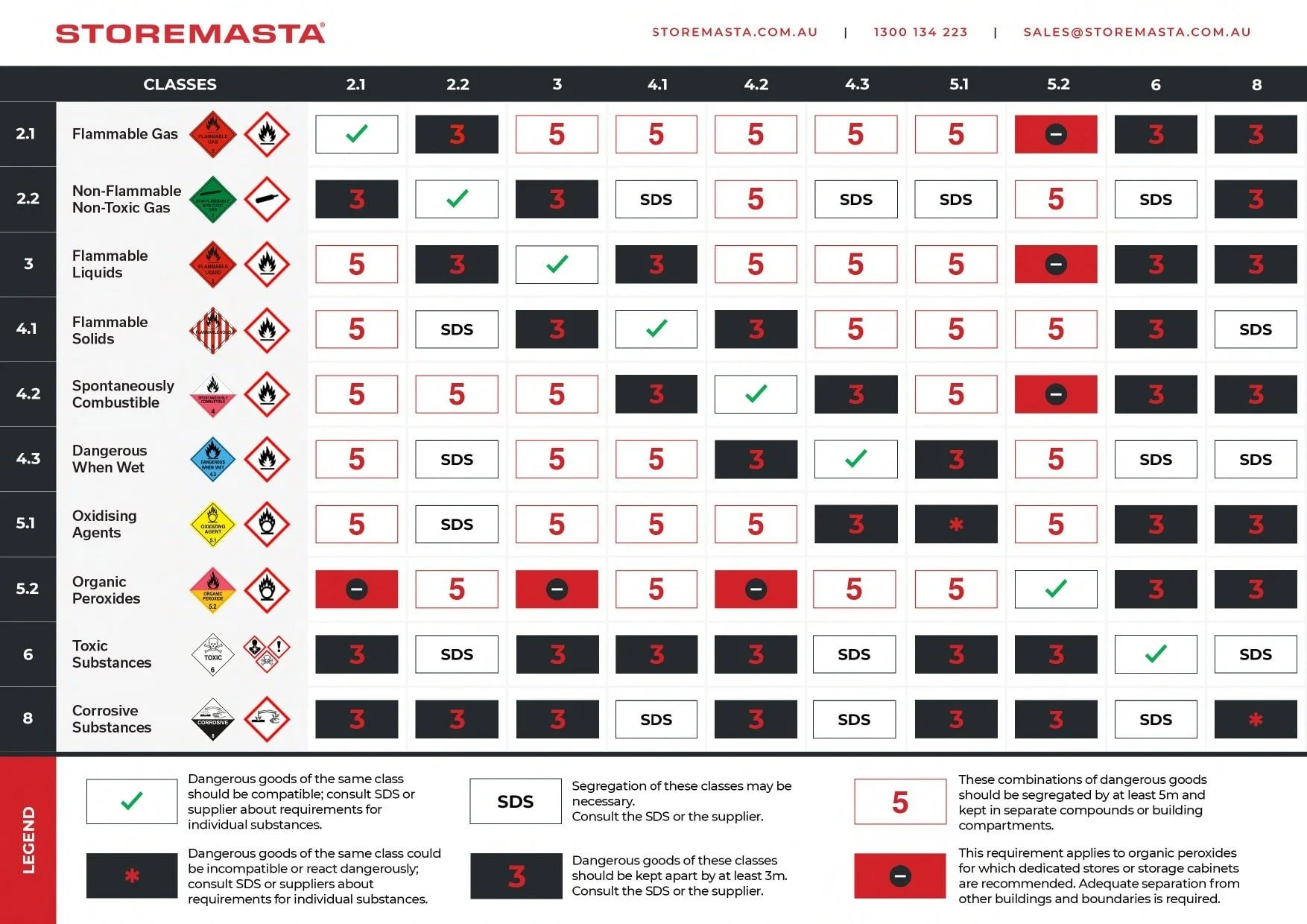What are the regulations surrounding chemical storage in Australia?
In Australia there are a numerous requirements for chemical storage and the treatment of dangerous goods. Here at IDL we have on site a number of dangerous goods and chemical products that are required for our wine, cider and RTD beverage creation purposes, as well as our packaging services.
Material Safety Data Sheets:
A material safety data sheet (MSDS) is a document that provides information about a specific chemical. This product's safety aspects are outlined, such as chemical storage, dangerous goods class, and transport hazards. Storage conditions and the particular dangers of the product are also recommended.
Alerts are provided to ensure safety. Holding a chemical on site requires an accessible copy of the MSDS. This should be available in case of an emergency. This outlines to any relevant personnel what they should do in an emergency.
Dangerous goods classes:
There are 10 dangerous goods classes in Australia. Each material will fit in at least one dangerous goods class (if the product is deemed a dangerous good). They are:
2.2 Flammable Gas
2.2 Non-Flammable Non-Toxic Gas
3 Flammable Liquids
4.1 Flammable Solids
4.2 Spontaneously Combustible
4.3 Dangerous When Wet
5.1 Oxidising Agent
5.2 Organic Peroxides
6 Toxic Substances
8 Corrosive Substances
If your site holds over a certain quantity of dangerous goods, chemical storage legislation states that you are required to display the logo of the dangerous goods classification on the entrance to the storage space. This is so emergency services are aware of potential dangers. Additionally, if you hold over a certain amount of chemicals on site in general, you may be required to display a HAZCHEM sign at your front entrance to your site. This alerts emergency services before they even enter your site that there are dangerous goods on site.
Transport Information:
Section 14 of a MSDS outlines how dangerous a material is to transport. This is slightly different to chemical storage. A material will either be classified as I, II or III. With packing group I presenting high danger, II medium danger and III low danger. If you are not the one responsible for transporting the dangerous goods, it is still a good idea to be aware of their packing classification.
Dangerous goods segregation and storage:
There are a number of laws surrounding dangerous goods chemical storage in Australia. Certain quantities of dangerous goods required bonded storage, specialised storage cabinets (we use and recommend Storemasta). Some dangerous goods cannot be stored next to each other depending on their rating. The segregation chart shown here demonstrates the effective storing of dangerous goods in close proximity to one another, outlining how these chemicals must be stored.
At IDL, we have a number of Storemasta dangerous goods cabinets on site to ensure our site is as safe as possible, and all dangerous goods are stored correctly. This includes all flavours and additives that we utilise as part of our RTD capabilities.
Read also: The Importance of Adhering to Alcohol Labelling Mandatories, Benefits of Engaging a Contract Canning Company
